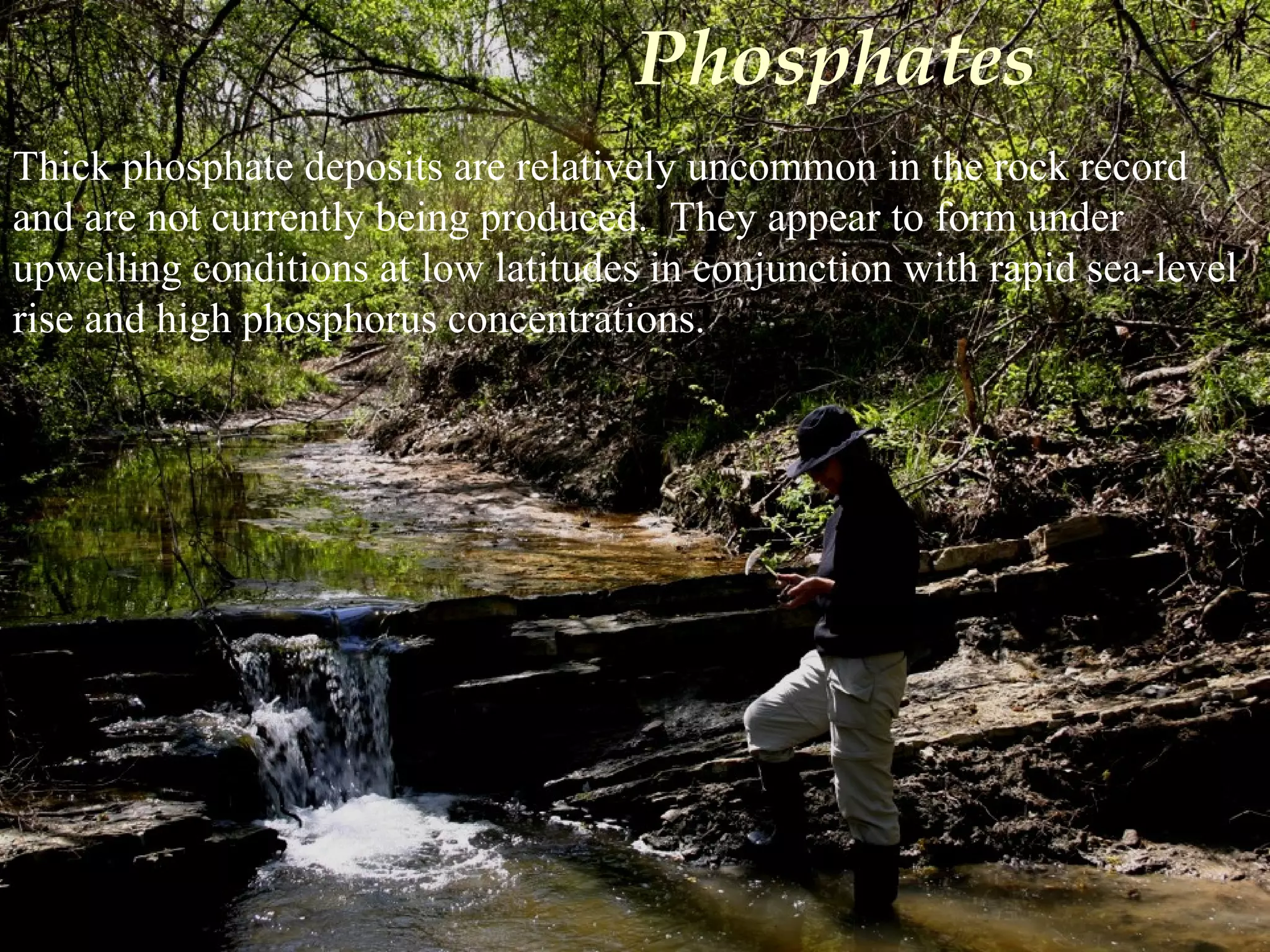Chert is a form of quartz that occurs in sedimentary rocks, usually in discontinuous beds or nodules. It can form biologically from siliciclastic rocks or diagenetically from carbonates. Coal forms from plant debris in association with some siliciclastic rocks. It can have banded or non-banded textures reflecting its organic compound content. Coal rank depends on the degree of metamorphism, with increasing rank containing more energy per volume. Evaporites form through chemical precipitation in restricted basins where evaporation exceeds precipitation, leaving behind minerals like gypsum, halite, and sulfates.














